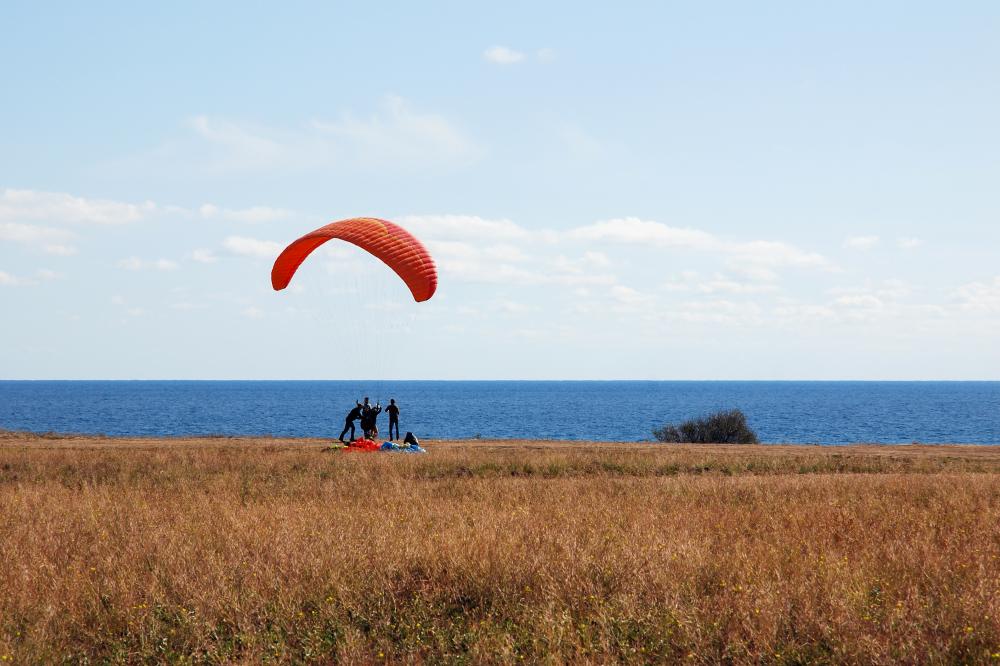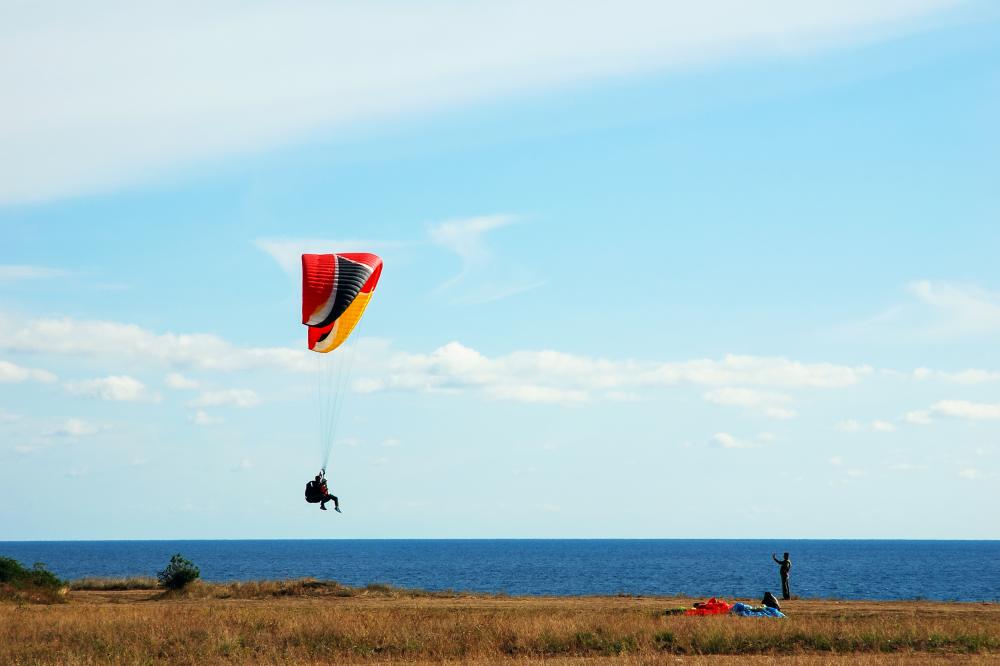
The Journey of Flight Training
Embarking on the journey of flight training is an exhilarating venture, combining the thrill of piloting with rigorous educational challenges. At Fly Sunrise, we dedicate ourselves to providing an insider’s view into the world of aviation, offering insights and stories from those who have navigated the skies and the classrooms. As we dive into the complexities and joys of flight training, we bring personal experiences and professional wisdom to illuminate the path for aspiring pilots.
Understanding the Costs
Breaking Down the Financial Investment
Perhaps the most pressing question on every aspiring pilot’s mind is, “How much will flight training cost?” It’s no secret that pursuing a career in the skies is not a modest financial undertaking. The sum total of flight training encompasses more than just the hours spent in the air; it includes ground school, aircraft rental fees, instructor charges, and the hidden costs like gear and examination fees. At Fly Sunrise, we’ve seen firsthand how these expenses can add up, but we’ve also witnessed the return on investment. The freedom and opportunities that come with a pilot’s license are unparalleled.
Navigating Financial Aid and Scholarships
Knowing the price tag attached to flight training often leads to the next inquiry: “How can I afford it?” Fortunately, a variety of financial aid options and scholarships are available to help budding pilots take off. Through partnerships with educational institutions and aviation organizations, we’ve helped many of our clients secure the funding needed to pursue their dreams. Each financial journey is unique, but the destination remains the same: achieving the coveted pilot’s certificate.
Selecting the Right Training Program
Choosing the perfect flight training program is a critical step in your aviation adventure. This decision will shape your learning experience, influence your future career, and impact your financial planning. At Fly Sunrise, we pride ourselves on offering tailored advice to help you navigate through the myriad of options, whether it’s a Zero Time to Airline program for those dreaming of a commercial pilot career or a Private Pilot License for aviation enthusiasts yearning to explore the skies at their leisure.
Exploring Flight Training Options
Commercial Pilot Training
For those aiming to soar in commercial aviation, comprehensive training programs are the cornerstone of career development. These programs meticulously prepare students for the demands of the cockpit, from mastering complex maneuvers to understanding the intricacies of commercial flight operations. Our partnerships with leading airlines and flight schools ensure our clients receive top-tier training, positioning them for success in the competitive aviation industry.
Private Pilot Training
Becoming a private pilot opens up a world of freedom and exploration. This path is ideal for individuals looking to fly for leisure or personal business. Though less intensive than commercial training, obtaining a private pilot license still requires dedication to mastering flight principles, navigation, and safety protocols. At Fly Sunrise, we’ve guided countless clients through this rewarding process, sharing in their triumphs as they earn their wings.
Making the Most of Flight Training
To truly excel in flight training, one must dive in with both feet. This means embracing the theoretical alongside the practical, committing to rigorous study and consistent practice. It’s not just about logging hours in the air; it’s about immersing yourself in the world of aviation. Joining a community of pilots, attending seminars, and engaging with flight training resources enrich the learning experience. We encourage our clients to foster curiosity and a relentless pursuit of knowledge, as these qualities are the hallmarks of excellent pilots.
The Role of Flight Simulators
An Essential Tool in Pilot Training
Flight simulators play an indispensable role in pilot training, offering a safe and controlled environment to practice maneuvers, procedures, and emergency situations. These sophisticated systems replicate the experience of flying, allowing students to hone their skills without leaving the ground. At Fly Sunrise, we’ve seen the confidence flight simulators build in students, preparing them for real-world flying with a solid foundation of experience.
Blending Simulation with Actual Flying
The interplay between simulator training and actual flight hours is a delicate balance. While simulators provide invaluable practice, there is no substitute for the real thing. The tactile sensations of flying, from the rumble of the engine to the resistance of the controls, need to be experienced firsthand. We advocate for a training approach that marries the benefits of both, utilizing simulators to reinforce learning and build confidence before transitioning those skills to the cockpit.
Embracing Aviation Safety
At the heart of all flight training is a deep-seated commitment to safety. From the earliest lessons in ground school to advanced commercial training, safety is the primary lens through which all training is viewed. At Fly Sunrise, we emphasize the importance of a safety-first mindset, encouraging our clients to always prioritize safe practices, meticulous planning, and continuous learning. Aviation is an inherently risky endeavor, but with the right training and attitude, risks can be managed and minimized.
The Flight Training Community
Lastly, it’s essential to highlight the vibrant community that flight training cultivates. Joining this community connects you with like-minded individuals who share your passion for aviation. At Fly Sunrise, we’ve seen lifelong friendships formed and careers launched through these connections. Engaging with the community through forums, clubs, and aviation events enriches the flight training experience, providing support, motivation, and opportunities for mentorship.
In conclusion, flight training is a multifaceted journey that requires a significant investment of time, money, and effort. However, the rewards of piloting your own aircraft and joining the ranks of licensed pilots are immeasurable. At Fly Sunrise, we are dedicated to guiding you through every step of this journey, ensuring you have the resources, support, and knowledge required to succeed. Whether your aspirations lie in commercial aviation or recreational flying, let us help you navigate your path to the skies.

How much does it cost to get flying training?
At Fly Sunrise, one of the most frequent questions we’re asked is about the cost of flying training. It’s a vital part of planning your path in aviation, and the answer isn’t always straightforward because it depends on the type of training you’re pursuing. For a Private Pilot License, which is where many start, the costs can range from $8,000 to $15,000 on average. However, if you’re aiming for a career as a commercial pilot, the investment can reach up to $100,000 when including advanced ratings and certifications. But remember, this is an investment in your future, opening doors to careers that not only are rewarding but also pay well in the long run. Have you considered what type of flying interests you the most?
What is the true cost of flight training?
The true cost of flight training extends beyond the hours in the cockpit. When we talk about the ‘true cost,’ we’re including ground school, textbooks, equipment like headsets, and examination fees, among other expenses. There’s also the aspect of time investment. It’s not just about the financial part; it’s the hours of study, the exams, and the preparation for each flight. At Fly Sunrise, we believe in transparently discussing these costs from the outset to help you plot a course that’s financially feasible and aligned with your aspirations. How do you feel about balancing the dreams of flying with the practical steps needed to get there?
How many years of training do you need to fly a plane?
The timeline for flight training can vary widely depending on your goals and how frequently you can fly. For a Private Pilot License, if you’re flying a couple of times a week, you could potentially earn your wings in about six months to a year. For those aspiring to be commercial pilots, the journey is longer, often taking around two to four years, which includes earning multiple ratings and accumulating the required flying hours. At Fly Sunrise, we tailor the training pace to fit your life, ensuring it’s a journey that’s as enjoyable as it is rewarding. What’s your ideal timeline for learning to fly?
Do any airlines pay for pilot training?
Yes, some airlines offer sponsored training programs or provide financial assistance to aspiring pilots through cadet or ab-initio programs. These are highly competitive but can significantly reduce the financial burden of flight training. It’s a win-win; airlines cultivate a pipeline of skilled pilots while candidates receive top-notch training often with a job waiting at the end. However, these programs come with commitments, usually requiring several years of service with the airline. At Fly Sunrise, we’re always keen to guide our clients through the application process for such opportunities. Would you be interested in exploring these opportunities further?
What role do flight simulators play in training?
Flight simulators are a cornerstone of modern pilot training, providing a risk-free environment to practice maneuvers, understand complex systems, and rehearse emergency procedures. The beauty of simulators lies in their ability to replicate real flight conditions without the actual risks or costs associated with flying. At Fly Sunrise, we’ve witnessed firsthand how confidence soars when students train on simulators. They enter real-world flying better prepared, making their in-air training more effective. How do you envision incorporating simulators into your training regimen?
Why is a safety-first mindset crucial in aviation?
In aviation, safety isn’t just a practice; it’s a culture. It’s about making prudent decisions, meticulous planning, and always being prepared for the unexpected. At Fly Sunrise, we instill a safety-first mindset from day one, ensuring that as pilots progress, this mindset becomes second nature. Aviation is incredibly safe, in part, because of this unwavering commitment to safety at every level. Embracing this approach not only minimizes risks but also enhances the joy and freedom of flying. How do you perceive the role of safety in your flying ambitions?
How does joining the flight training community benefit students?
Joining the flight training community opens a world of support, knowledge, and camaraderie. It’s a space where shared experiences and challenges bring people together, creating opportunities for mentorship, advice, and friendships. At Fly Sunrise, we’ve seen how these connections can lead to job opportunities, partnerships, or even lifelong friendships. Engaging in forums, clubs, or attending aviation events enriches your training journey, providing a well of resources and motivation. Have you thought about how becoming part of this vibrant community could shape your flying career?
Flight Training Resources
- Federal Aviation Administration (FAA) – The official website of the FAA provides a wealth of information on regulations, safety, and training requirements for aspiring pilots.
- Aircraft Owners and Pilots Association (AOPA) – AOPA offers resources on flight training, pilot advocacy, and community engagement for both new and experienced pilots.
- National Business Aviation Association (NBAA) – NBAA provides resources and support for pilots pursuing a career in business aviation, including safety guidelines and professional development opportunities.
- FAA – How to Become a Pilot – This FAA guide outlines the steps and requirements to become a pilot, including information on licenses, ratings, and medical certifications.
- AOPA – Training and Safety – AOPA’s training and safety resources cover a wide range of topics, from beginner pilot tips to advanced flight training techniques.
Top Tips on Choosing the Right School For Your Flight Training
 The choice you make now in where to get your training will impact the rest of your career. Make the right choice by contacting Sunrise Aviation to discuss your objectives and career goals. Our friendly staff is available by phone to answer your questions and help you make the best choice when it comes to courses and upgrade options. Once you decide what your …
The choice you make now in where to get your training will impact the rest of your career. Make the right choice by contacting Sunrise Aviation to discuss your objectives and career goals. Our friendly staff is available by phone to answer your questions and help you make the best choice when it comes to courses and upgrade options. Once you decide what your …
3 Crucial Questions For Any Flight Training Provider
 When we seek the proper assistance with our flight training, we need to make sure that we are choosing the best possible school to assist us. This is where flight training questions come into play and there are certain queries that need to be addressed as early as possible during the selection process.Let’s take a closer look at the most crucial questions for any flight training provider. By taking the time …
When we seek the proper assistance with our flight training, we need to make sure that we are choosing the best possible school to assist us. This is where flight training questions come into play and there are certain queries that need to be addressed as early as possible during the selection process.Let’s take a closer look at the most crucial questions for any flight training provider. By taking the time …
Pursuing A Career As An Airline Pilot Through Flight Training
.jpg) For most people, the decision to become a pilot is not always an easy choice to make due to the complicated and complex nature of the process. Before anyone can begin flying, there are certain things he or she must do. They include:Choosing the right flight school to attend The type of training program to pursue The validity period of the course Flight test standard requirements etc.At one point in …
For most people, the decision to become a pilot is not always an easy choice to make due to the complicated and complex nature of the process. Before anyone can begin flying, there are certain things he or she must do. They include:Choosing the right flight school to attend The type of training program to pursue The validity period of the course Flight test standard requirements etc.At one point in …

